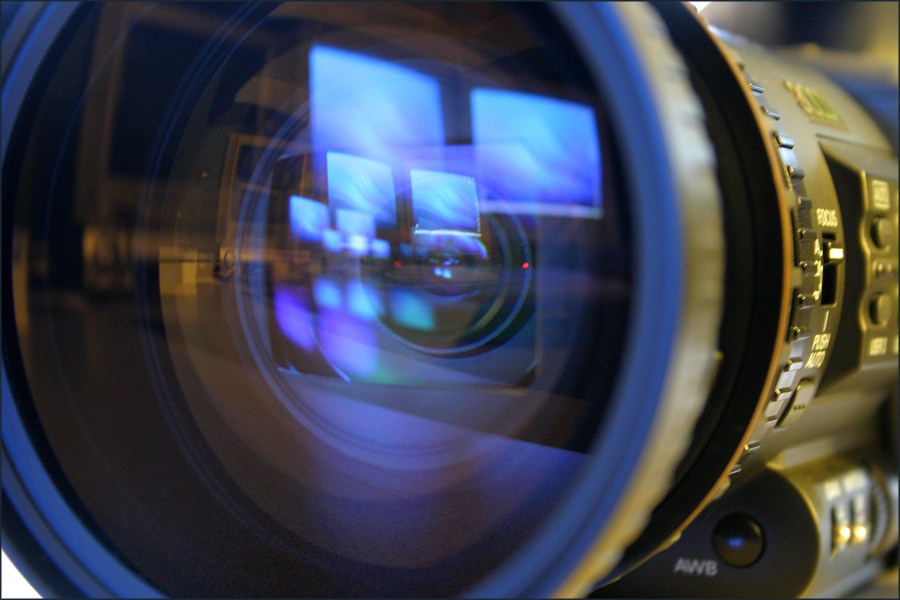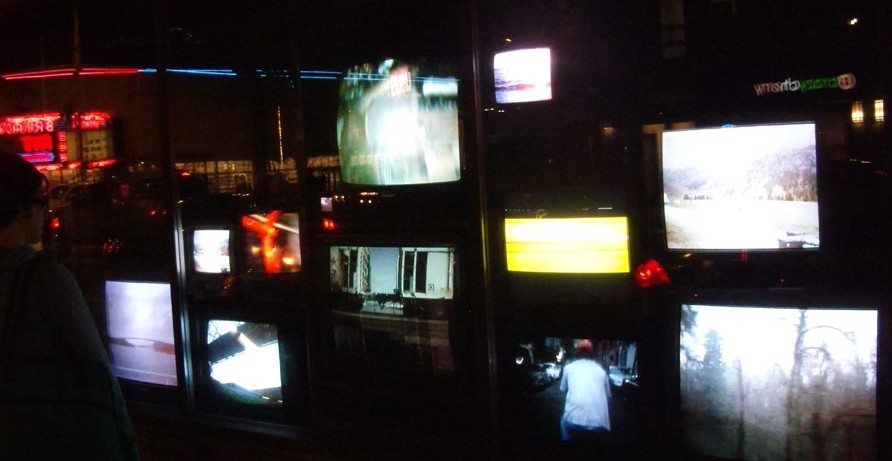 The teenager next door is doing it in his bedroom.
The teenager next door is doing it in his bedroom.
The grandparents up the street are doing it in the park.
The school guidance counselor is doing it in the auditorium.
They're shooting video, and sometimes even editing it.
But who cares? Video plays everywhere. It's ubiquitous. It's so omnipresent as to be ordinary. It's about as surprising as a text message, as novel as a horseless carriage.
This never used to be the case, but as with all things technological, the extraordinary becomes ordinary faster than milk sours at room temperature. Is anyone surprised that you can add electric light to your dark living room with just the barest finger pressure against a plastic switch? Perhaps not, but if you lived in the middle of the 19th century, you'd be totally amazed.
Video has mutated into new, strange forms of micro-modernism and also harkened back to older forms that have been transmogrified into contemporary dialect.
Let us not even speak of embedded YouTube links. There's no point in deconstructing the value propositions for different creative groups to choose Vimeo over Vevo, Dailymotion over The Daily Show. The issue is that as the new lingua franca, video will eat itself if it cannot remember its origins.
Remember writing? Photography? Music?
What's interesting is how much those disciplines and countless others continue to play essential roles in the modern video lexicon, even if their cultural pedigrees are often buried under push-wipes and snap-pans and other electronic filigree.
The lament is that video's ubiquity has dampened the power of the medium. Like the thrill of seeing electric light for the first time in a world's fair pavilion, lightbulbs have no thrill at all when you're stumbling for one in the middle of a twenty-first century night. Video has only become omnipresent in the past decade. Insofar as it's a tool available to millions if not billions of people, I have to wonder if the trend going forward is not the evolution and development of newer, better videos, but irrelevance. The moment we are inured to the power of something -- lightbulbs, for example--the moment they lose their hold on our consciousness. Video isn't there yet, but it was only a few years ago when it was an extraordinary thing to click on and play a video link in your web browser. Now it's ordinary to gulp down entire seasons of episodic television on a wireless tablet sitting on your couch or a stiff airport lounge chair. Sometimes I even catch a glimpse of people doing this in traffic, stopped at a light. (Put that phone down, please.)
Clearly there will continue to be new stories and new storytellers who bring all sorts of invention and power to this rapidly changing medium. But the era of amazement and thrill stemming from the medium itself has long since past. What's left to separate signal from noise, as it's always been throughout the history of creative enterprise, is the value of the content. Content is always king. Now that the dawn of the video era is over, no one can foretell what the long day of video's ubiquity will bring.
--MS
PS: You know you can follow us for more info, right? Try these cool links, and share them with your friends:
Twitter @michaelstarobin
Facebook http://www.facebook.com/1auglobalmedia
LinkedIn http://www.linkedin.com/in/mstarobin

